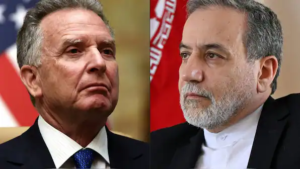In a move that caught international observers by surprise, Russian President Vladimir Putin has offered to unilaterally maintain the core limits of the New START nuclear treaty after it expires in February 2026—but only if the United States agrees to do the same. This proposal, emerging amid intense pressure over the war in Ukraine, is less a simple peace offering and more a high-stakes geopolitical chess move.
As an analyst of international security and diplomacy, I see this offer as a critical test for the Trump administration. It presents a seemingly straightforward choice to avoid a new arms race, but it is layered with strategic implications that demand careful scrutiny.
The Offer on the Table: A “Voluntary” Freeze
The 2010 New START Treaty is the last remaining pillar of bilateral nuclear arms control between the two superpowers. It caps each side’s deployed strategic nuclear warheads at 1,550 and their delivery systems (ICBMs, submarines, and bombers) at 700. Putin’s proposal is for a one-year extension of these central limits on a voluntary, reciprocal basis.
On the surface, this appears to be a responsible step back from the brink. As Daryl Kimball of the Arms Control Association stated, it is a “positive and welcome move” that could avert an immediate, dangerous lapse with no constraints on the world’s two largest nuclear arsenals. The White House’s initial response, calling the idea “pretty good,” suggests a potential opening.
Decoding the Strategy: Why Now?
To understand Putin’s true objective, we must look at the context. This is not a random act of goodwill; it is a calculated maneuver driven by several factors:
- Seizing the Diplomatic High Ground: By making the first public offer, Putin positions Russia as the reasonable party committed to global stability, putting the onus on the U.S. to respond. A rejection from Washington would allow Moscow to blame America for any subsequent arms race.
- A Response to Pressure on Ukraine: President Trump has publicly pressured Putin to end the war in Ukraine. This nuclear offer can be seen as a tactical diversion—changing the subject from Ukraine to arms control, an area where Russia feels it can negotiate from a position of strength.
- Testing U.S. Cohesion: The proposal is deliberately simple, but it masks complex issues. It forces the Trump administration to quickly formulate a cohesive response on a matter of supreme national security, potentially exposing divisions within its ranks.
The Pitfalls and Unanswered Questions

While the offer seems appealing, experts caution against accepting it at face value. A voluntary freeze comes with significant risks:
- Verification Void: The New START treaty includes rigorous, on-site inspections and data exchanges to verify compliance. A voluntary agreement lacks these critical transparency measures. How would either side trust that the other is adhering to the limits? This creates a foundation of suspicion, not stability.
- Leverage for New Concessions: Putin’s statement that Russia will monitor U.S. defense activity—specifically missile defense and space-based interceptors—suggests this freeze could be a precursor to demanding concessions in these areas. He is effectively linking strategic offensive limits to U.S. defensive capabilities, a long-standing Russian objective.
- Kicking the Can Down the Road: A one-year pause does not solve the underlying problem: the complete collapse of the arms control architecture. It merely delays the inevitable need for a new, more comprehensive treaty, all while the technological landscape evolves with hypersonic weapons and other advancements.
Analysis: A Path Forward or a Strategic Dead End?
For the Trump administration, the response to Putin’s gambit will define its nuclear policy for the foreseeable future.
- The Opportunity: Accepting the proposal, while demanding a parallel technical dialogue on verification, could create a crucial breathing space. It would prevent a legal lapse and keep the door open for future negotiations, potentially including China—a stated goal of President Trump, however challenging.
- The Risk: A straightforward acceptance without safeguards could legitimize a weaker form of arms control and embolden Russia. Alternatively, a flat rejection could trigger the very arms race both sides claim to want to avoid, costing hundreds of billions of dollars and heightening global insecurity.
The Bottom Line
Putin’s offer is a classic piece of strategic ambiguity. It provides a short-term off-ramp from a immediate crisis of his own making, while creating long-term leverage. The West must respond not with relief, but with clear-eyed realism.
The goal should not be a temporary freeze, but a renewed commitment to verifiable, stable, and equitable arms control that addresses the threats of the 21st century. Whether this offer is a genuine step toward that goal or a clever trap designed to split the West will be revealed by the sophistication of the American response.




